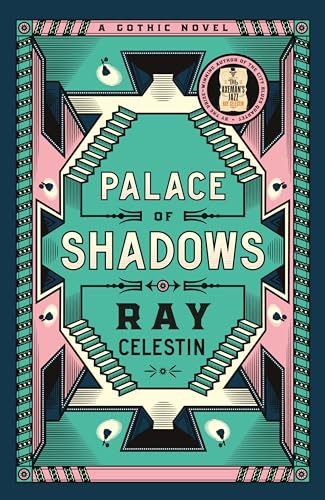Palace of Shadows
Celestin’s transition, from his award-winning City Blues Quartet into the world of the dark gothic novel, shows his masterful storytelling prowess. Palace of Shadows, about a house and its inhabitants, elevates many of the traditional gothic tropes. The story begins as unsuccessful artist Samuel Etherstone accepts an offer from the wealthy Mrs Chesterfield to work on the house she is building on the remote Yorkshire coast. Ghosts of the past, madness, grief, witchcraft and war all ensue, but sit comfortably together and never feel forced for the sake of the plot.
Not only is this novel a page-turner in the traditional sense, but a masterclass in subtext and metaphor. The careful reader will also be rewarded with several references to other works. The novel reads like the finest Wilkie Collins or Arthur Conan Doyle, with the addition of modern horror elements.
At the heart of the book stands a wonderful house which has endless loops and stairs that go nowhere, thus calling to mind the artwork of MC Escher. Comparisons to the Women’s Prize-winning novel Piranesi (Susanna Clarke) are justified. The narrative structure is told from an entirely male perspective, despite some complex and wonderfully drawn female characters. This makes sense when we consider that the novel makes much of war and the foolish men that mechanise it.
The middle structure of the novel becomes an endless loop as we revisit the house in varying time periods times to reflect the experiences of its key inhabitants. Whilst a clever device, reflecting the structure of the house, this does considerably slow the pacing. However, this is forgiven as the book rushes to its vivid climax containing rich scenes that the reader will remember long after finishing. This is the perfect book to read by the fireside on a winter’s evening. Don’t miss it.










